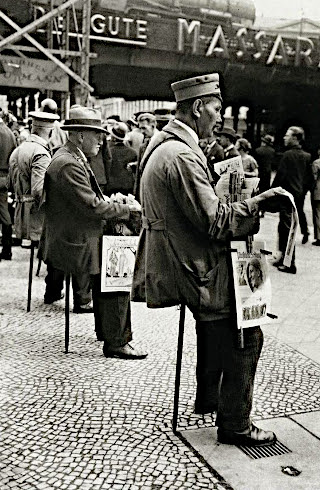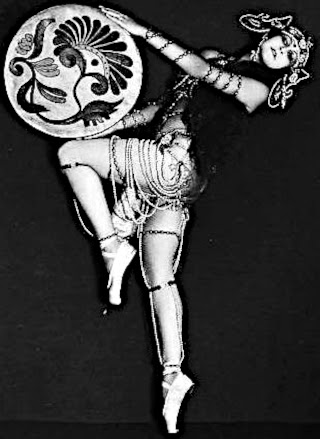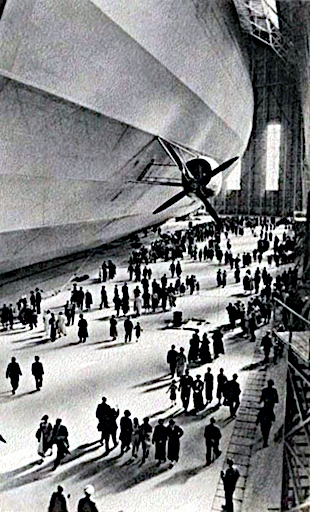All things one has forgotten, scream for help in dreams.
Elias Canetti, Die Provinz der Menschen

Mr. Wall Street Says: Don't worry, the Fed's got your back!
Let's play a game.

"We cannot expect that all nations will adopt like systems — for conformity is the jailer of freedom, and the enemy of growth. But however close we sometimes seem to that dark and final abyss, let no man of peace and freedom despair. For he does not stand alone. If we all can persevere, if we look beyond our own shores and ambitions, then surely the age will dawn in which the strong are just and the weak secure and the peace preserved."
John F Kennedy, Address to U.N., September 25, 1961

Mr. Wall Street Says: Don't worry, the Fed's got your back!
Let's play a game.
 After sorting out the limits and characteristics of their capital and cash flows, for any trader, any investor, the first and fundamental question should be: am I operating in a bull or a bear market, or one of indeterminate trend, a sideways drift?
After sorting out the limits and characteristics of their capital and cash flows, for any trader, any investor, the first and fundamental question should be: am I operating in a bull or a bear market, or one of indeterminate trend, a sideways drift?
The Bonfire of the Vanities
"Lenin is said to have declared that the best way to destroy the Capitalistic System was to debauch the currency. . . Lenin was certainly right. There is no subtler, no surer means of overturning the existing basis of society than to debauch the currency. The process engages all the hidden forces of economic law on the side of destruction, and does it in a manner which not one man in a million can diagnose." J. Maynard Keynes, Economic Consequences of the Peace, pg. 235
"...wealth gotten by vanity shall be diminished, but wealth gathered by labor shall increase." Prov 13:11-12.
 The January Barometer basically says that as goes the S&P 500 in January, so goes the market for the year. “A down January means a down year” would seem to be the obvious reading for 2008. Credit Yale Hirsch, editor of the Stock Trader’s Almanac, for devising the January Barometer in 1972. According to the Hirsch research, January’s trend matches the trend for the year about nine times out of 10. If you toss out a few close calls, when the market was up or down less than 5 percent for the year, the January Barometer still works three out of four times, the Stock Trader’s Almanac reports. Since 1950, the S&P 500 has posted a gain for the year 91% of the time that the index experienced a positive January. For those "cautious" investors who desire an even larger sampling, since 1926, that percentage [a positive January foreshadowing a positive full year] falls to 80%, although that’s still a pretty telling predictor of future market activity.
The January Barometer basically says that as goes the S&P 500 in January, so goes the market for the year. “A down January means a down year” would seem to be the obvious reading for 2008. Credit Yale Hirsch, editor of the Stock Trader’s Almanac, for devising the January Barometer in 1972. According to the Hirsch research, January’s trend matches the trend for the year about nine times out of 10. If you toss out a few close calls, when the market was up or down less than 5 percent for the year, the January Barometer still works three out of four times, the Stock Trader’s Almanac reports. Since 1950, the S&P 500 has posted a gain for the year 91% of the time that the index experienced a positive January. For those "cautious" investors who desire an even larger sampling, since 1926, that percentage [a positive January foreshadowing a positive full year] falls to 80%, although that’s still a pretty telling predictor of future market activity.
"...We systematically examine the predictive power of January returns over the period 1940–2003 and find that January returns have predictive power for market returns over the next 11 months of the year. The effect persists after controlling for macroeconomic/business cycle variables that have been shown to predict stock returns, the Presidential Cycle in returns, and investor sentiment, and it persists among both large and small capitalization stocks and among both value and growth stocks. In addition, we find that January has predictive power for two of the three premiums in the Fama–French [1993. Journal of Financial Economics 33, 3–50] three-factor model of asset pricing."
The Other January Effect, Journal of Financial Economics, Volume 82, Issue 2, November 2006, Pages 315-341



























